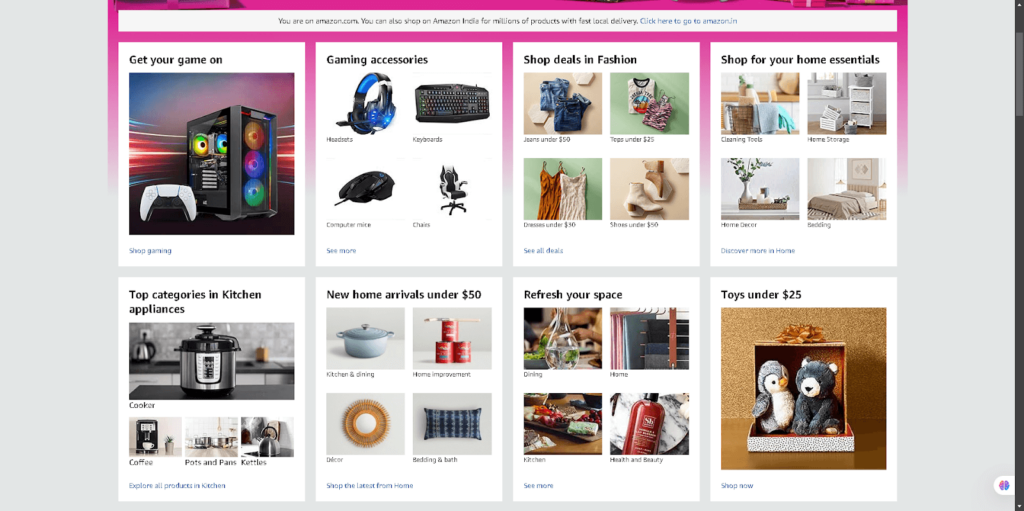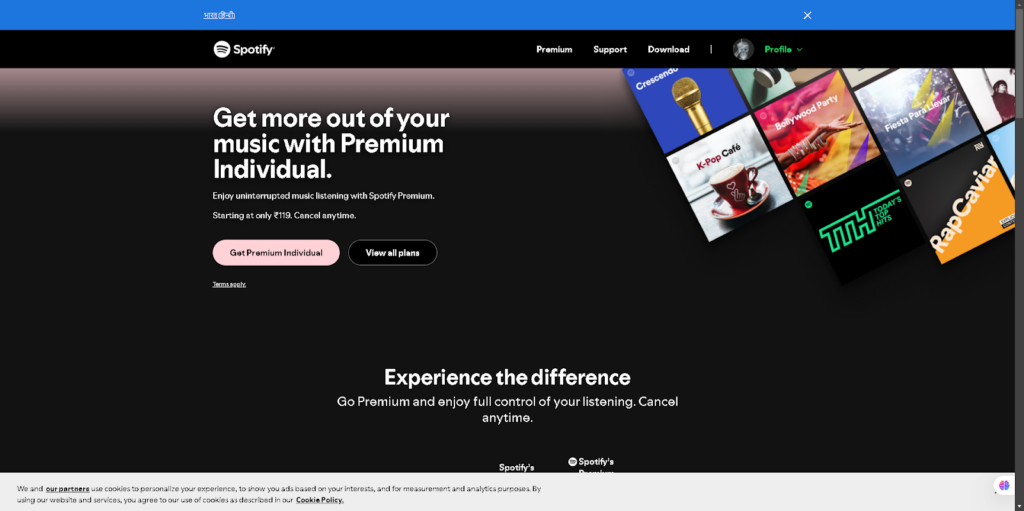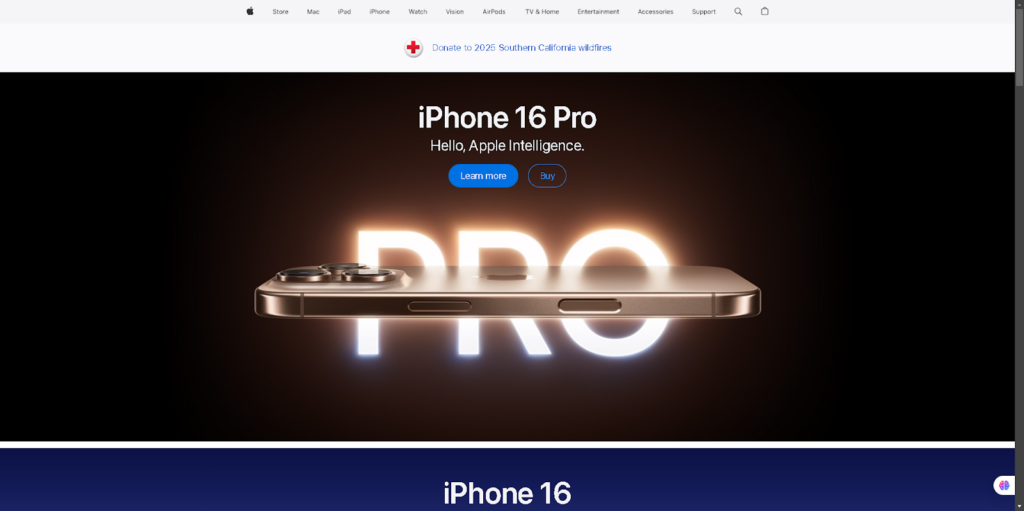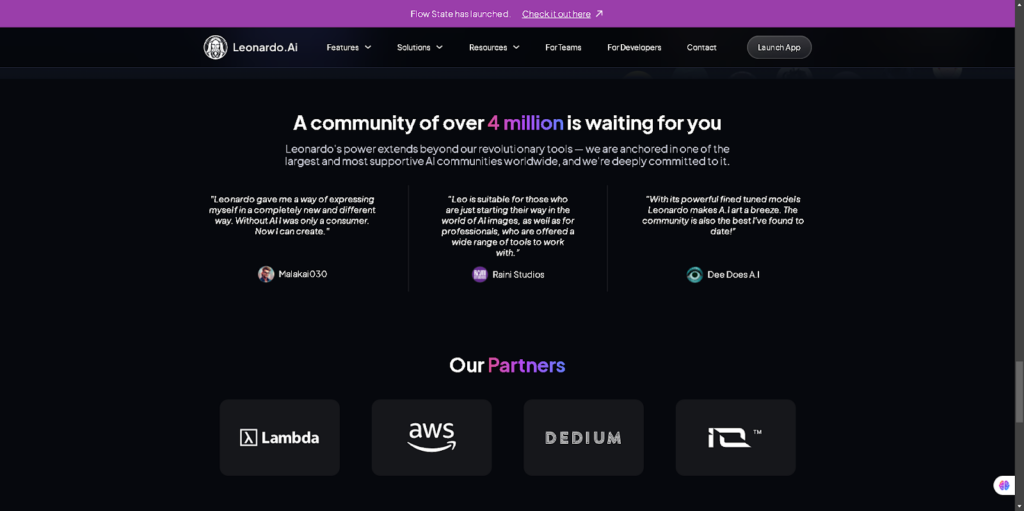🎁 Free 30-day publishing fees on Pay-As-You-GO. Get 15% off when recruiting from the UserQ Panel, with code HELLO15

The homepage is often referred to as the digital front door of a website. It’s the first thing most visitors see and serves as a decisive moment for them to decide whether they’ll stay or leave. A great homepage design is visually appealing and functional, guiding users to seamlessly explore the rest of the website.
Think of it as your website’s central hub, where your audience begins their journey. This article will explore five essential principles for crafting an engaging, user-focused homepage.
1. Prioritise the right content
The core purpose of any website homepage design is to serve the website’s primary goal, whether that be driving sales, providing information, building a community, or generating leads.
No matter the type of website—whether it’s an institutional website, ecommerce, or a forum—the homepage should clearly explain what the site offers and why it matters to users.
Understanding the primary goal of your website is crucial because it serves as the foundation for an effective homepage design. For instance, an online store should prominently display best-selling products or special promotions, as these elements align with what users typically look for, encouraging purchases and driving conversions.
Similarly, blogs must showcase their most engaging and popular content, such as trending articles or insightful posts, to immediately capture and retain readers’ attention.
Key elements that should be included in the homepage are a concise summary of the website’s value proposition, which clearly communicates what sets the site or business apart.
Featured content, like “most purchased products” or “latest blog posts,” should be strategically placed to draw users’ attention and sustain engagement. Finally, intuitive navigation links to essential sections like “shop,” “about us,” or “contact” ensure visitors can easily find the information they need, enhancing their overall experience and satisfaction.
Let’s consider Amazon’s homepage, where featured deals, user-specific recommendations, and clear navigation dominate the homepage design. It’s tailored to showcase the right content based on user preferences and buying behaviour. 75% of users judge a website’s credibility based on its overall aesthetics.

2. Craft a compelling hero section
The hero section is the first visual element users see, making it one of the most critical parts of your homepage design. This is where you can make a strong impression and drive immediate action, like exploring the product categories or making a purchase.
A strong hero section doesn’t just look good—it communicates effectively. It should feature high-quality visuals or videos that reflect your brand identity and resonate with your target audience.
Pair these visuals with a concise, impactful headline that communicates the brand’s core value, such as “Premium coffee delivered to your door.” Additionally, a clear call to action (CTA) like “Start Shopping,” “Explore More,” or “Join Now” should stand out. Ensure the CTA is visually prominent by using contrasting colours or bold designs.
To keep the hero section engaging and relevant, update it regularly for seasonal or promotional campaigns. For instance, an e-commerce site could showcase holiday deals during Christmas or back-to-school offers.
Ensure visuals and copy align with the brand’s identity to maintain authenticity. Avoid generic or overused imagery and instead focus on something distinctive and aligned with the brand’s unique character.
For instance, Spotify’s homepage often showcases bold visuals paired with direct CTAs, like “get premium” or “listen free,” making it clear and appealing.

3. Guide users with clear navigation
A common issue with many websites is overwhelming or confusing navigation. Effective homepage UX design involves guiding users intuitively to their desired destination. 75% of users judge a website’s credibility based on its overall aesthetics.
Keeping navigation menus streamlined and focused is essential to providing a seamless user experience. To achieve this, prioritise high-value categories such as “new arrivals,” “best sellers,” or “services.”
Placing these options prominently ensures visitors can quickly locate the most relevant sections of your website. Including a well-positioned search bar is also crucial, as many users prefer this direct approach to finding specific items or information.
Drop-down menus can be helpful, but they should be used sparingly to group related items logically and avoid overwhelming users.
Your homepage also offers opportunities to create unique navigation experiences. Dynamic content sections like “What’s New” or “Top Picks” can highlight curated content that engages users and encourages further exploration.
Additionally, interactive elements like featured product carousels can allow users to browse items directly from the homepage, adding a layer of convenience and interactivity to their journey.
Also, avoid cluttering the homepage with too many links, as this can overwhelm users and cause confusion. Instead, focus on clarity and simplicity to enhance the homepage UX design. According to a report by CXL, 94% of first impressions of a website are design-related. Think of your navigation menu as a roadmap that simplifies the journey for your audience.
A great example would be Apple’s website homepage. Apple excels at presenting a minimalist and user-friendly navigation experience. The product-based top navigation bar features clear and concise links to major sections like “Mac,” “iPhone,” and “Accessories.”

4. Showcase social proof and trust indicators
Building trust starts on the homepage. Users often evaluate your credibility based on what they see at first glance. Incorporating social proof and trust indicators is a UX homepage best practice that boosts conversions and user engagement.
To instill confidence in users, showcasing social proof and trust indicators on your homepage is essential. Highlighting customer testimonials, like logos of companies that used their services, feedback from satisfied users, can significantly impact trust.
For example, customer reviews like “This product changed my life” carry real weight and create a personal connection. Adding trust badges or certifications, such as “Secure Payments,” “Certified Organic,” or “Carbon Neutral,” can further establish legitimacy and professionalism.
Additionally, showcasing impactful statistics and achievements, such as “500,000+ happy customers” or “20 years of expertise in the industry,” can undermine your credibility and success, giving users a compelling reason to engage with your brand.
Companies like Airbnb use their homepage to build credibility by featuring user testimonials and trust badges, like “verified hosts.” Another example is PayPal, which reassures users with trust logos like “buyer protection” and “data encryption secured.”

5. Optimise for responsive and mobile-first design
With mobile devices accounting for more than half of global web traffic, optimising your homepage for mobile-first design is non-negotiable. A seamless experience across devices reduces bounce rates and improves user satisfaction.
Ensuring the hero section and images adapt seamlessly to smaller screens is crucial for mobile users. Testing different layouts can help maintain visual appeal across devices, providing a consistent user experience.
Calls-to-action (CTAs) should be strategically placed in easily accessible areas, such as the middle of the screen, to minimise excessive scrolling.
Furthermore, page load speed plays a critical role in user experience and conversion rates. A slow homepage can frustrate visitors, leading to higher bounce rates and lower engagement.
If a website takes too long to load, users may perceive it as untrustworthy or outdated, negatively affecting brand credibility. Testing load speeds are also imperative, as studies show that 53% of users abandon a mobile site if it takes longer than 3 seconds to load.
Generally, a responsive design can reduce bounce rates by up to 50% and improve engagement metrics. Additionally, mobile-friendly sites often rank higher in search engine results, giving your site a competitive edge.
Conclusion
An effective homepage design isn’t just about aesthetics. It’s about delivering a seamless, user-focused experience that prioritises the right content, engages visitors with a compelling hero section, simplifies navigation, builds trust, and ensures a responsive design.
Trends like interactive elements and AI-driven personalisation will redefine homepage UX design even further. Now is the time to audit your homepage, identify gaps, and apply these principles to enhance user engagement and drive conversions. Start today and transform your homepage into a powerful gateway for your brand.
Related Post

10 Warning signs of a
User experience (UX) design is critical in shaping the end-user’s interaction with digital solutions. As it plays a vital role

Potential of AI in UX
With companies prioritising user-centric design to satisfy customer expectations, the Middle East and North Africa (MENA) area is a fast

Tips to write effective prototype
Success in prototype testing can take many forms. For some, successful testing is when they receive authentic and actionable feedback,
Subscribe to our
product newsletter!
Receive emails about UserQ updates, new features,
offers and latest trends.


